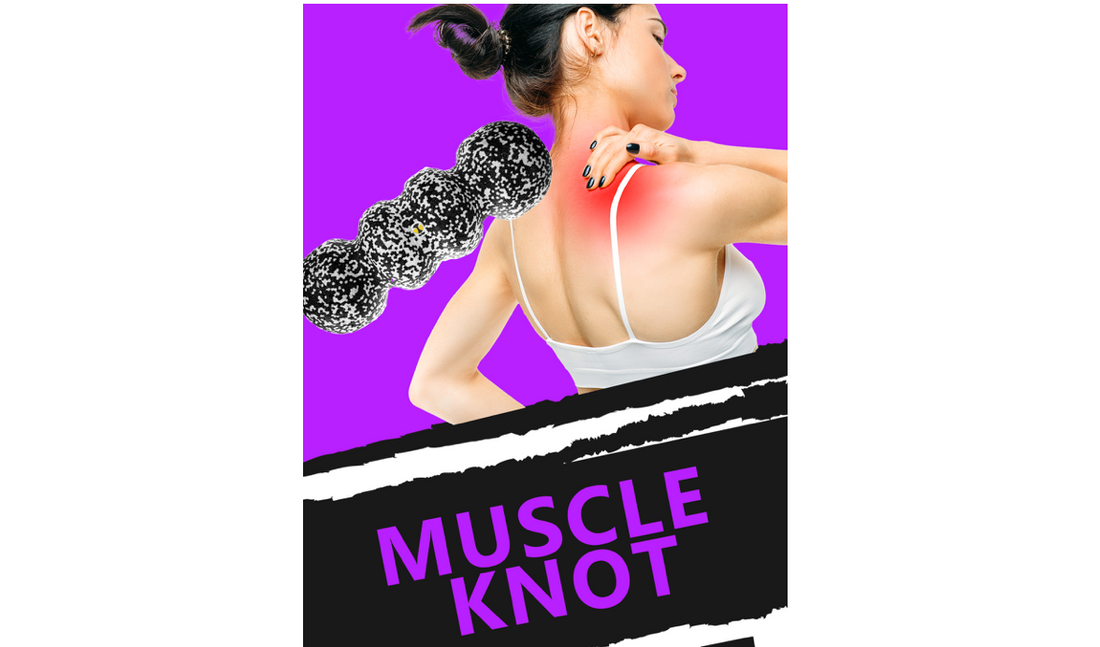
What Are Muscle Knots?
Simply put, muscle knots are contracted and/or stuck muscle fibers or connective tissue (fascia) that stay contracted or stuck even when the muscle is at rest. When a muscle is working properly, muscle fibers and the connective tissue they are wrapped in (fascia) slide past each other freely, resulting in painless contraction and relaxation of the muscle. When a muscle is positioned incorrectly for an extended period of time, overworked, or introduced to trauma, however, it will engage in a protective, tightened state that can result in muscle knots. Muscle knots are typically confined to one specific area of the muscle, but may refer pain to areas outside of the knot itself (i.e. a knot in the back referring pain to the neck or a knot in neck causing headaches, etc.). Muscle knots can occur anywhere in the body but are most common in the back, neck, glutes, hamstrings, and lower legs. Pain from muscle knots can also be active (continuous pain) or passive (painful only when touched). Sitting at a desk all day, performing repetitive exercises like running or swimming, or having poor posture are all risk factors for developing muscle knots. The formation of muscle knots can also result from, or be encouraged by, dehydration, improper diet, and/or stress.
Why Are Muscle Knots Bad?
Muscle knots are harmful for two primary reasons. First, they’re painful, or can at least lead to pain if not addressed. Because muscle knots are inherently enlarged areas within a muscle, they often put abnormal pressure on surrounding nerves, causing discomfort. Even when a knot isn’t initially painful, when it is ignored, it can grow in size and become painful. Second, muscle knots prevent muscles from fully expanding and contracting, limiting muscle flexibility and range of motion. Since muscle knots lock specific areas of the muscle into place, the muscle tissue surrounding knots becomes very tight, which can lead to injury of the muscle itself (muscle strain, tear, etc.) or contribute to other injuries (tendonitis, stress fractures, etc.).
How To Get Rid Of Muscle Knots:
Research goes back and forth on the effectiveness of certain techniques like stretching, ultrasound, or low level lasers for releasing muscle knots; however, the use of massage as an effective remedy is almost universally agreed upon. Applying consistent, gradual pressure to a muscle knot has been shown to not only increases blood flow to the area (encouraging healing), but also physically break up adhesions. Self-massage has likewise been shown to be just as effective as manual muscle manipulation for release of muscle knots (and is a much more cost effective solution). When using a foam roller for self-massage, however, it is important to apply targeted, consistent pressure to the muscle knot for healing to begin. The Rollga Foam Roller is a great option for releasing muscle knots as it is specifically designed to easily reach and apply targeted pressure to muscle knots. To release muscle knots with a Rollga Foam Roller, simply position your body so that the muscle knot is sitting on one of the Rollga’s grooves, hold for 15-30 seconds, make 10-15 small passes back and forth slowly, and then make 10-15 larger passes back and forth slowly. Repeat this process 2-3 times per day until the muscle knot is released.
